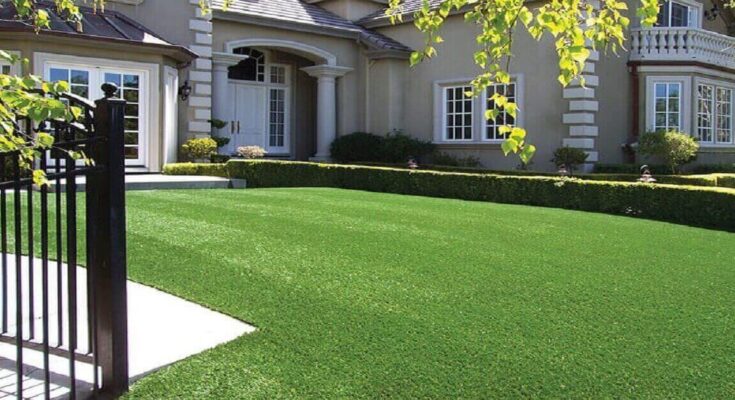Artificial turf installation can save you time and money in the long run if you live or own property in the North. Synthetic grass can withstand the area’s climate conditions better than other landscaping options like natural grass. Here’s an in-depth look at the impact of climate on artificial turf:
Artificial Turf and Cold Weather
While winter has some minor impacts on the feel of artificial turf, the grass holds up well against snow. Artificial turf can feel harder beneath your feet if it’s cold enough for the soil beneath your turf to freeze. But it can still offer cushioning since the grass itself doesn’t freeze. You may not notice changes to your artificial turf if the ground beneath it doesn’t freeze.
Read Also: What Towel Supplies Do You Need To Clean Your Vacation Rental?
Artificial grass isn’t affected by frost, so it’s unlikely to break when walked on during the winter. With proper care, your grass can look the same way it did before winter — you don’t need to budget for new turf every year.
If you plan on using your turf during the winter, invest in a turf broom or leaf blower to help you get rid of the snow. You can also hire a professional maintenance company to sweep off the snow.
If you don’t plan on using your lawn, you can let the snow melt over time. Snow doesn’t affect synthetic grass in any way, so you don’t need to worry about the grass losing its color. Properly installed turf has a drainage system, so water retention isn’t a problem.
Artificial Turf and Rain
Modern turf is water permeable — rainwater can seep through the turf’s small fibers into the ground underneath. With proper installation, you never have to deal with flooding on your lawn during regular rainy weather. You also don’t have to worry about unsightly holes or dips developing on your lawn.
Artificial turf is also a great option for rainy weather, as it doesn’t get slippery when wet. This is a significant benefit for properties that receive regular foot traffic, as people can walk without falling. They also don’t have to worry about carrying mud on their shoes, as professional installers place sub-bases between synthetic grass and soil, lowering the chances of dirt reaching the turf.
If anything, rain can help artificial turf flourish. Rainwater can clean the synthetic grass blades, leaving the turf shinier.
Artificial Turf and Heat
Artificial turf can resist heat damage, as it’s made from a non-organic material and contains UV-resistant fibers. It doesn’t change color when constantly exposed to the sun, so your property can maintain its aesthetic appeal.
You can manage how hot your grass gets during extreme heat by choosing the right infill. Light-colored options like silica sand are suitable, as they don’t trap heat, allowing your grass to stay cool.
Does the Artificial Turf Installation Process Determine How Climate Affects Your Grass?
Proper turf installation can help minimize climate impacts on artificial grass. You need to hire a professional company, as they’ll know how to install an appropriate drainage system. This is key to keeping your artificial turf safe and aesthetically appealing during the cold and rainy seasons. A professional can also advise you on the best infill to use based on your intended purpose for the artificial turf and your area’s level of sun exposure. They can also advise you on how to care for artificial turf after installation — this can save you money in the long run.
Here are the steps a professional is likely to take when installing artificial turf:
- Consultation: This step allows them to identify your needs and your area’s climate conditions so they can determine how to conduct the installation.
- Excavation: This involves preparing the sub-base for drainage system installation.
- Preparation for installation: This involves adding geotextile and rocks as sub-bases before the actual installation. These components are key in maintaining a proper drainage system and separating turf from the soil, minimizing the risk of flooding and mud reaching the turf’s surface.
- Installation: This involves laying the turf in the designated area, trimming it, and adding infill.
Choose an installer who knows your area and its climate, as they may understand your needs better than those who don’t.
Artificial Turf Can Withstand Climate Up North
Synthetic grass has become one of the most popular landscaping options because it’s low maintenance. Artificial turf doesn’t break off during the winter, as it’s not affected by frost. It also doesn’t hold rainwater, making it ideal for anyone worried about holes, flooding, or slips and falls on their property during rainy weather. With proper artificial turf installation and care, synthetic turf can hold up against any weather condition.




